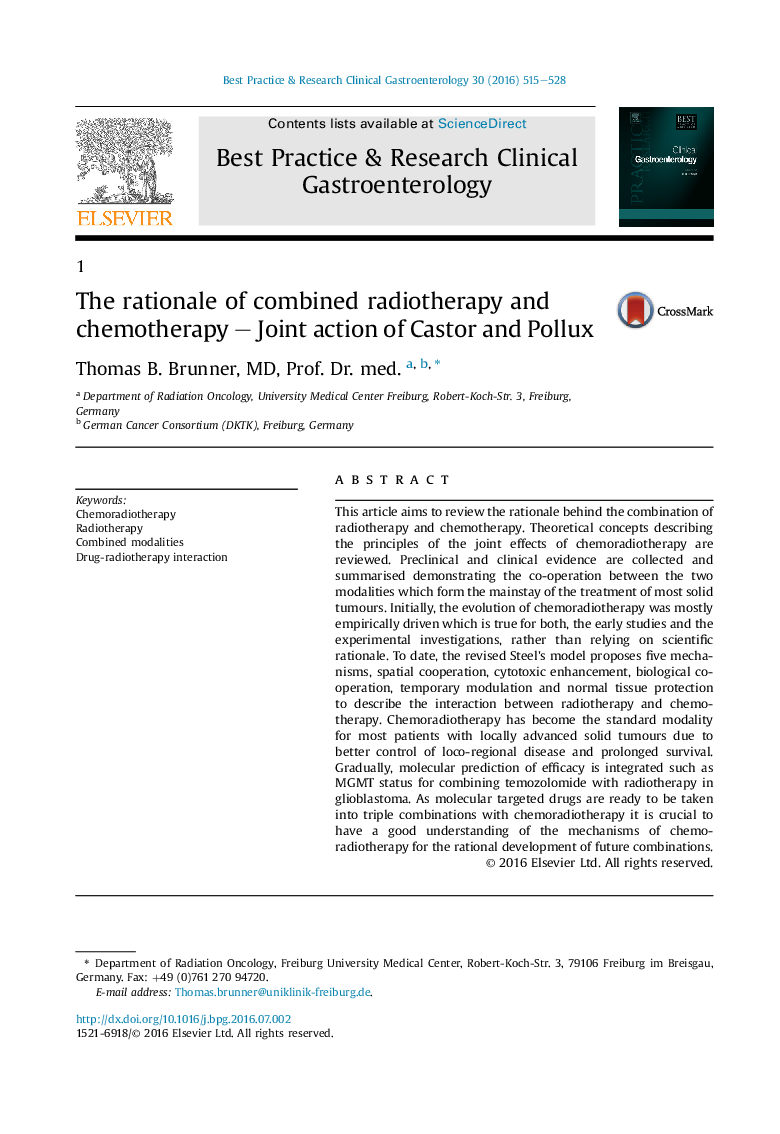| Article ID | Journal | Published Year | Pages | File Type |
|---|---|---|---|---|
| 3253981 | Best Practice & Research Clinical Gastroenterology | 2016 | 14 Pages |
This article aims to review the rationale behind the combination of radiotherapy and chemotherapy. Theoretical concepts describing the principles of the joint effects of chemoradiotherapy are reviewed. Preclinical and clinical evidence are collected and summarised demonstrating the co-operation between the two modalities which form the mainstay of the treatment of most solid tumours. Initially, the evolution of chemoradiotherapy was mostly empirically driven which is true for both, the early studies and the experimental investigations, rather than relying on scientific rationale. To date, the revised Steel's model proposes five mechanisms, spatial cooperation, cytotoxic enhancement, biological co-operation, temporary modulation and normal tissue protection to describe the interaction between radiotherapy and chemotherapy. Chemoradiotherapy has become the standard modality for most patients with locally advanced solid tumours due to better control of loco-regional disease and prolonged survival. Gradually, molecular prediction of efficacy is integrated such as MGMT status for combining temozolomide with radiotherapy in glioblastoma. As molecular targeted drugs are ready to be taken into triple combinations with chemoradiotherapy it is crucial to have a good understanding of the mechanisms of chemoradiotherapy for the rational development of future combinations.
